In the competitive realm of online business, dropshipping stands out for its low overhead and easy entry point, making it an attractive model for aspiring entrepreneurs.
However, to thrive, selecting products with a high profit margin is crucial. These lucrative items offer the potential for significant earnings while still keeping costs accessible to your customers.
Focusing on products like tech gadgets, health and wellness essentials, or fashionable apparel can make your dropshipping venture particularly profitable.
By targeting low cost products with high profit margins or small products that yield substantial returns, your business can maximize its potential.
Offering a mix of evergreen items and trending goods can create a diverse and appealing catalog for customers.
Keep your eyes peeled for unique, high-demand items that cater to various interests, from beauty and personal care to pet supplies and sporting goods.
Understanding Profit Margins in Dropshipping

Profit margins in dropshipping are essential for the vitality of your business—they represent the difference between the product cost sourced from suppliers and the final price you sell it for, minus any additional expenses.
Essentially, it’s a measure of your financial gain and is typically expressed as a percentage; indicating the return on investment (ROI) for your efforts.
Calculating Profit Margin:
- Step 1: Determine your net sales by subtracting any returns or refunds from your total revenue.
- Step 2: Identify the cost of goods sold (COGS), which includes the purchase price and additional costs such as shipping.
- Step 3: Subtract the COGS from your net sales to calculate your gross profit.
- Step 4: Divide the gross profit by the net sales and multiply by 100 to get the profit margin percentage.
Example:
Profit Margin (%) = [(Net Sales – COGS) / Net Sales] × 100
Factors affecting profit margins can be envisioned as a complex interplay between market trends, demand, pricing strategies, and competition.
To maintain high margins, you must conduct thorough market analysis and research, understand the current trends and demand, set competitive prices, and develop robust marketing strategies.
The yield of your dropshipping business depends greatly on how you manage these factors.
Your pricing should consider the competitive landscape. By sourcing products from reliable suppliers, you can keep your costs low and maintain better margins.
It’s all about finding the balance between attracting customers through competitive pricing and ensuring your prices cover your costs and desired profit.
In conclusion, understanding and analyzing profit margins is crucial because it directly affects how much money you can make from your dropshipping business.
By following the described steps and keeping a close watch on the factors influencing your margin, you’ll be able to adapt your strategy and enhance your returns.
Pros and Cons of Dropshipping Products with High Profit Margin

When venturing into e-commerce, particularly dropshipping, selecting products with high profit margins might seem like a direct route to success. Here’s what you need to keep in mind:
Pros
- Profitable Potential: High-margin products mean you could earn more per sale, which, when scaled, can significantly boost your overall income.
- Niche Targeting: Offering specialized products, such as high profit margin print on demand products, can help you tap into untapped markets or cater to very specific consumer needs.
- Trend-Spotting Opportunity: Identifying and capitalizing on trends early on can position you as a go-to retailer for hot, in-demand items, increasing the chance of higher sales.
- Replenishable Sales: Selling replenishable or evergreen items, like certain health and fitness products, encourages repeat purchases and solidifies a steady stream of earnings.
Cons
- Market Competition: While profitable, high-margin niches can eventually attract more competition, which may reduce your market share and sales.
- Demand Uncertainty: Specialized and trendy products can be hit or miss. A lack of steady demand for extremely niche items might make sales less predictable.
- Customization Challenges: With the appeal of customizable and personalized items, keeping up can be tough due to the need for specialized suppliers or complex logistics.
- Inventory Risks: Despite not holding stock, you’re still reliant on your suppliers. Any issues with their supply can lead to accessory or consumable availability problems and unhappy customers.
Navigating high-margin dropshipping effectively involves a balance of strategic planning and opportunistic action. With careful market research and a keen eye on consumer trends, you can make the most of the possibilities these products offer.
Health and Wellness Products
Health and wellness is a booming niche with significant opportunistic potential for dropshipping businesses looking to capitalize on high-profit margin products.
The demand for these products has surged as consumers increasingly prioritize health-conscious lifestyles.
Paired with the right marketing strategy, the following items can become a mainstay in your product catalog.
To ensure success in this niche, research is key. Understanding market trends and preferences will aid in curating a selection that aligns with consumer demands.
Opt for specialty and high-margin wellness products that promise both health benefits and ethical appeal to tap into this thriving market.
1. Organic Superfood Powders

Organic superfood powders, like spirulina, matcha, or wheatgrass, are popular for their health benefits and ease of use. They are often added to smoothies, juices, or meals for an extra nutrient boost.
Pros
- High Demand: Growing interest in health and wellness.
- Easy to Ship: Lightweight and not prone to damage during shipping.
- Long Shelf Life: Less risk of spoilage compared to fresh produce.
Cons
- Market Competition: Highly competitive market.
- Quality Concerns: Need to ensure product purity and organic certification.
Pricing and Potential Profit
- Wholesale Cost: Around $10-$15 per unit.
- Retail Price: Can be sold for $25-$40 per unit.
- Profit Margin: Approximately 50-60%.
2. Essential Oils

Used for aromatherapy, essential oils like lavender, peppermint, and eucalyptus are popular for their therapeutic properties.
Pros
- Versatile Use: Used in diffusers, massages, and skin care.
- Strong Customer Loyalty: Repeat purchases once a preferred brand is found.
- High Perceived Value: Allows for higher markups.
Cons
- Quality Variation: Varying purity levels across brands.
- Regulation and Claims: Cannot make unverified health claims.
Pricing and Potential Profit
- Wholesale Cost: Around $5-$10 per bottle.
- Retail Price: Can be sold for $15-$30 per bottle.
- Profit Margin: Approximately 50-70%.
3. Yoga Mats
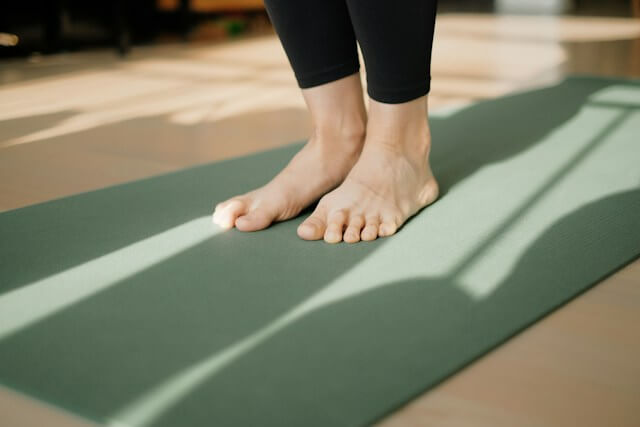
High-quality, non-slip yoga mats cater to the growing yoga and fitness community, including eco-friendly or designer mats.
Pros
- Diverse Range: Wide variety of materials, thicknesses, and designs.
- Community Appeal: Popular in the yoga and fitness community.
- Brand Collaboration: Potential for co-branding with influencers.
Cons
- Bulky Shipping: Larger than some other wellness products.
- Market Saturation: High competition in the yoga accessories market.
Pricing and Potential Profit
- Wholesale Cost: Around $10-$20 per mat.
- Retail Price: Can be sold for $30-$60 per mat.
- Profit Margin: Approximately 50-60%.
4. Herbal Supplements

Herbal supplements, like turmeric capsules or ginseng extracts, are sought for their natural health benefits.
Pros
- Growing Health Trend: Increasing preference for natural supplements.
- Repeat Customers: Regular use leads to repeat purchases.
- Wide Audience: Appeals to various age groups and health concerns.
Cons
- Regulatory Compliance: Need to ensure compliance with health regulations.
- Efficacy Claims: Limitations on health benefit claims.
Pricing and Potential Profit
- Wholesale Cost: Around $10-$15 per bottle.
- Retail Price: Can be sold for $20-$40 per bottle.
- Profit Margin: Approximately 50-60%.
Tech Gadgets and Accessories
In the dynamic world of dropshipping, tech gadgets and accessories stand as a beacon for high-profit margins, appealing to a broad spectrum of consumers looking for the latest innovations.
Your savvy selection in this category can lead to substantial returns, as these products are evergreen and consistently in demand.
The following items are high-margin must-haves for your dropshipping business, making them ideal for maintaining a strong revenue stream.
These innovative items are not only popular but also propel your profit margins significantly when sourced at a competitive rate and marketed effectively.
Moreover, as tech gadgets evolve, so do their accessories. Your customer base will continually seek the latest in this evergreen space, creating opportunities for you to target tech enthusiasts who prize having the newest tech accessories.
By choosing products wisely and staying informed about the latest tech trends, you can capitalize on the high profit potential in the tech gadgets and accessories niche.
5. Wireless Earbuds

Wireless earbuds have become extremely popular due to their convenience and advanced features like noise cancellation and Bluetooth connectivity.
Pros
- High Demand: Growing popularity, especially among younger demographics.
- Portable and Convenient: Attracts customers looking for mobility and ease of use.
- Variety of Price Points: Range from affordable to premium models.
Cons
- Competitive Market: Numerous brands and models available.
- Quality Variability: Wide range in quality and performance.
Pricing and Potential Profit
- Wholesale Cost: Around $15-$40 per unit.
- Retail Price: Can be sold for $40-$100 per unit.
- Profit Margin: Approximately 50-60%.
6. Smart Watches
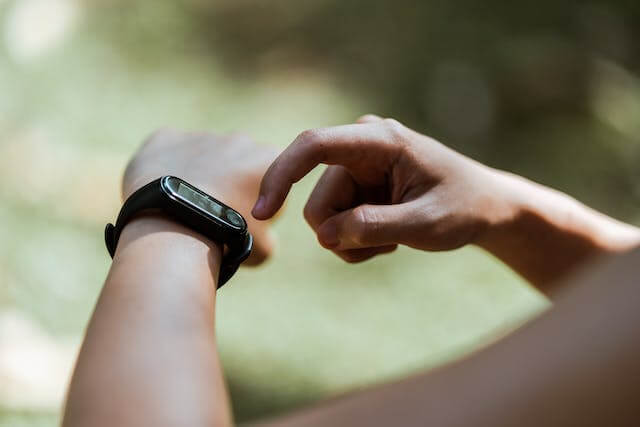
Smartwatches offer functionalities like fitness tracking, notifications, and even mobile payments, appealing to tech-savvy consumers.
Pros
- Feature-Rich: Attractive for health-conscious and tech-oriented customers.
- Brand Variety: Wide range of brands offering different features.
- Growing Market: Increasing popularity in wearable technology.
Cons
- Battery Life Concerns: Some models may have limited battery life.
- Price Sensitivity: Higher-end models can be quite expensive.
Pricing and Potential Profit
- Wholesale Cost: Around $50-$150 per unit.
- Retail Price: Can be sold for $150-$300 per unit.
- Profit Margin: Approximately 50-60%.
7. Portable Power Banks

Power banks are essential for on-the-go charging, especially for consumers who use multiple devices.
Pros
- Broad Appeal: Useful for almost anyone with a mobile device.
- Variety of Capacities: Available in different sizes and charging capacities.
- Easy to Ship: Generally small and lightweight.
Cons
- Commodity Product: High competition and price wars.
- Quality Concerns: Some may not meet performance claims.
Pricing and Potential Profit
- Wholesale Cost: Around $10-$20 per unit.
- Retail Price: Can be sold for $20-$40 per unit.
- Profit Margin: Approximately 50-60%.
8. VR Headsets

Virtual Reality (VR) headsets offer immersive gaming and entertainment experiences, attracting tech enthusiasts.
Pros
- Growing Popularity: Increasing interest in VR technology.
- Diverse Applications: Appeals to gamers, educators, and tech aficionados.
- Premium Product: Higher-end models can command premium prices.
Cons
- Compatibility Issues: May require specific hardware to operate.
- Higher Price Point: Some models can be quite expensive.
Pricing and Potential Profit
- Wholesale Cost: Around $50-$200 per unit.
- Retail Price: Can be sold for $100-$400 per unit.
- Profit Margin: Approximately 50-60%.
9. Drone Cameras
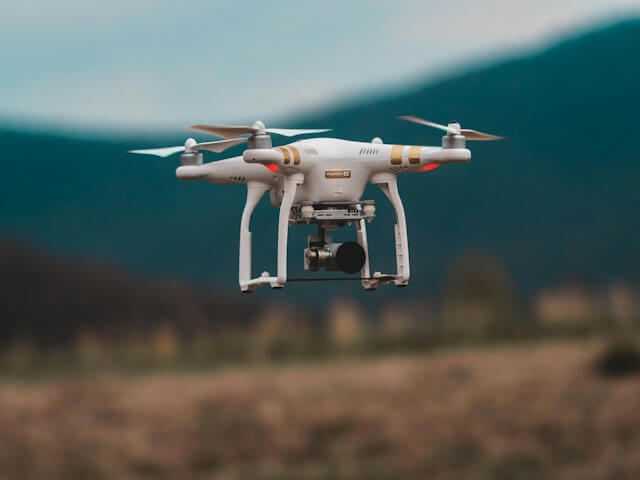
Drone cameras are popular for photography enthusiasts and professionals for aerial shots and videography.
Pros
- Niche Market: Attracts hobbyists and professional photographers/videographers.
- High-Tech Appeal: Latest models come with advanced features.
- Content Creation Trend: Popular for creating unique content.
Cons
- Regulatory Restrictions: Usage may be limited by local regulations.
- Higher Price Points: Advanced models are expensive.
Pricing and Potential Profit
- Wholesale Cost: Around $100-$500 per unit.
- Retail Price: Can be sold for $200-$1000 per unit.
- Profit Margin: Approximately 50-60%.
Fashion and Apparel
When you’re exploring the world of dropshipping, the fashion and apparel sector stands out as a lucrative niche with considerable high profit margins. This industry is always evolving, shaped by shifting trends and consumer demand.
Fashion items are particularly profitable in the dropshipping model due to their specialized nature and capacity for niche marketing. You can charge a premium by targeting specific customer segments with unique products.
Moreover, fashion items can be easily showcased through social media, driving up demand and allowing for a higher return on investment.
In your dropshipping venture, staying updated with the latest fashion trends and demands will be key to identifying products that can yield high profits. Here’s a snapshot of profitable fashion and apparel items for dropshipping:
10. Designer Inspired Handbags
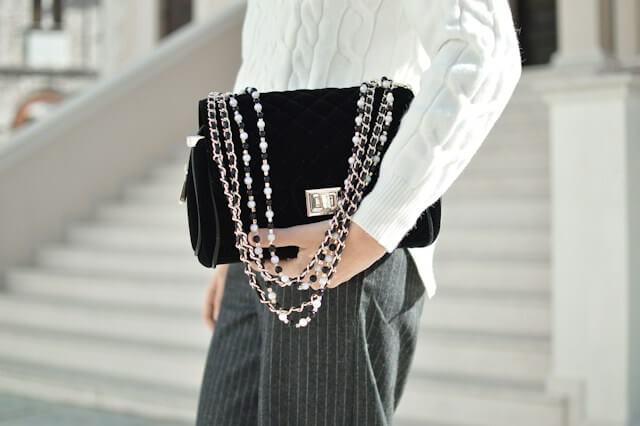
High-quality, designer-inspired handbags are always in demand. They offer the look and feel of luxury brands at a more affordable price.
Pros
- High Demand: Constantly popular, especially among fashion-conscious consumers.
- High Perceived Value: Customers are often willing to pay more for luxury-inspired designs.
- Wide Variety: Available in numerous styles, sizes, and colors.
Cons
- Quality Variations: Can vary greatly between suppliers.
- Legal and Ethical Considerations: Must ensure they don’t infringe on intellectual property rights.
Pricing and Potential Profit
- Wholesale Cost: Around $15-$30 per bag.
- Retail Price: Can be sold for $40-$80 per bag.
- Profit Margin: Approximately 50-70%.
11. Boutique Fitness Apparel

Fitness apparel from boutique brands combines style with functionality, appealing to the health-conscious and fashion-forward
Pros
- Growing Market: Increasing interest in fitness and wellness.
- Brand Differentiation: Boutique brands can stand out from mainstream fitness wear.
- Social Media Appeal: Highly shareable and marketable on platforms like Instagram.
Cons
- Size and Fit Issues: Sizing can be inconsistent across brands.
- Market Saturation: Highly competitive with many established brands.
Pricing and Potential Profit
- Wholesale Cost: Around $10-$20 per item.
- Retail Price: Can be sold for $25-$50 per item.
- Profit Margin: Approximately 50-60%.
12. Eco-Friendly Clothing

Sustainable, eco-friendly clothing made from organic or recycled materials caters to environmentally conscious consumers.
Pros
- Growing Consumer Awareness: Increasing demand for sustainable fashion.
- Brand Loyalty: Customers often remain loyal to brands that align with their values.
- Higher Price Tolerance: Consumers are willing to pay more for sustainability.
Cons
- Higher Production Costs: Eco-friendly materials can be more expensive.
- Niche Market: Not all consumers are motivated by sustainability.
Pricing and Potential Profit
- Wholesale Cost: Around $15-$30 per item.
- Retail Price: Can be sold for $30-$60 per item.
- Profit Margin: Approximately 50-60%.
13. High-End Streetwear

Streetwear has evolved into a high-end fashion statement, blending casual wear with exclusive design elements.
Pros
- Cultural Appeal: Strong following among younger demographics.
- High Profit Margins: Limited-edition items can be sold at a premium.
- Brand Collaboration: Potential for partnerships with designers or celebrities.
Cons
- Market Fluctuations: Trends in streetwear can change rapidly.
- Brand Perception: Success heavily reliant on brand image and hype.
Pricing and Potential Profit
- Wholesale Cost: Around $20-$50 per item.
- Retail Price: Can be sold for $50-$100 per item.
- Profit Margin: Approximately 50-60%.
Beauty and Personal Care Products
Beauty and personal care products are not only evergreen due to constant demand but are also commonly replenishable, encouraging repeat purchases.
Skincare: A staple in beauty routines, skincare items like serums and moisturizers have a loyal customer base. Specialized skincare solutions, targeting concerns such as anti-aging or acne, can command higher prices, thus offering better margins.
Eco-friendly Products: More consumers are seeking sustainable options, making eco-friendly beauty products a lucrative niche.
Products like biodegradable wipes or natural makeup appeal not only for their environmental benefits but also for their perceived quality and exclusivity.
| High Profit Margins | Specialty Attributes |
| Anti-Aging Creams | Replenishable, specialized |
| Organic Hair Care | Evergreen, eco-friendly |
| Luxury Facial Masks | High-end, evergreen |
| Cruelty-Free Cosmetics | Ethical, replenishable |
In your dropshipping business, focusing on specialized products within the beauty sector can set your store apart. With personal care, customers often prioritize specific benefits or ingredients, which allows you to charge a premium for these select goods.
Given the industry’s strength, identified by the growth in beauty product sales, aligning yourself with high-margin and specialized products can enhance your store’s success.
Remember, being informative and providing value to your customers through product knowledge can significantly boost your reputation in the dropshipping market.
14. Organic Skincare Products

Organic skincare products, including cleansers, moisturizers, and serums, made with natural ingredients, cater to the growing demand for eco-friendly and skin-safe cosmetics.
Pros
- Growing Market: Increasing consumer awareness about skin health and organic ingredients.
- Repeat Purchases: Skincare routines encourage regular purchases.
- Wide Target Audience: Appeals to a diverse demographic concerned with skin health.
Cons
- Shelf Life: Organic products may have a shorter shelf life.
- Certification and Regulation: Need for ensuring products meet organic certification standards.
Pricing and Potential Profit
- Wholesale Cost: Around $10-$20 per item.
- Retail Price: Can be sold for $20-$50 per item.
- Profit Margin: Approximately 50-60%.
15. High-Tech Beauty Gadgets

Beauty gadgets like facial cleansing brushes, LED therapy masks, and microcurrent devices are popular for advanced skincare routines.
Pros
- Innovative Appeal: Attracts tech-savvy beauty enthusiasts.
- Higher Price Points: Allows for significant mark-up and profits.
- Brand Differentiation: Can offer unique features over competitors.
Cons
- Market Saturation: Numerous similar products in the market.
- Product Education: Requires customer education for effective use.
Pricing and Potential Profit
- Wholesale Cost: Around $25-$50 per gadget.
- Retail Price: Can be sold for $50-$100 per gadget.
- Profit Margin: Approximately 50-70%.
16. Natural Hair Care Products

Natural hair care products, including shampoos, conditioners, and hair oils, cater to consumers seeking chemical-free alternatives for hair maintenance.
Pros
- Wide Consumer Base: Appeals to all ages and hair types.
- Brand Loyalty: Effective products often lead to loyal customer bases.
- Environmental Appeal: Attracts eco-conscious consumers.
Cons
- Product Efficacy: Natural products may vary in effectiveness.
- Competition: Strong competition from established brands.
Pricing and Potential Profit
- Wholesale Cost: Around $5-$15 per item.
- Retail Price: Can be sold for $10-$30 per item.
- Profit Margin: Approximately 50-60%.
17. Luxury Fragrances

Luxury fragrances, including perfumes and colognes, offer high-profit margins due to their brand value and consumer appeal.
Pros
- High Perceived Value: Luxury fragrances are often considered premium purchases.
- Gift Market: Popular as gifts, leading to higher sales during holidays.
- Brand Prestige: Associated with luxury and exclusivity.
Cons
- Counterfeit Products: Market is prone to counterfeits, affecting consumer trust.
- Price Sensitivity: High cost may limit the customer base.
Pricing and Potential Profit
- Wholesale Cost: Around $20-$40 per bottle.
- Retail Price: Can be sold for $50-$100 per bottle.
- Profit Margin: Approximately 50-70%.
18. Vegan Makeup
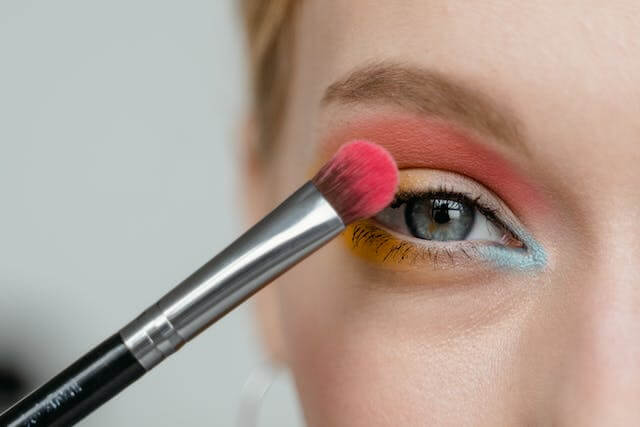
Vegan makeup products, free from animal-derived ingredients, appeal to ethically conscious consumers and makeup enthusiasts.
Pros
- Ethical Appeal: Attracts consumers looking for cruelty-free options.
- Trend-Driven: Aligns with current beauty trends towards sustainability.
- Diverse Range: Includes a wide range of products from foundations to lipsticks.
Cons
- Niche Market: Primarily appeals to vegan and cruelty-free consumers.
- Product Stability: Some vegan formulations may lack the longevity of traditional makeup.
Pricing and Potential Profit
- Wholesale Cost: Around $5-$15 per item.
- Retail Price: Can be sold for $10-$30 per item.
- Profit Margin: Approximately 50-60%.
Pet Supplies
Pet supplies have emerged as a remarkable niche with significant potential for high profit margins in dropshipping.
Pets are considered family, and you’ll find that pet owners are consistently willing to spend on quality products for their furry friends.
The pet industry is not just vast; it’s also growing. Specialized foods and innovative toys are among the untapped potential within this market segment.
What’s more, many of these products are replenishable, meaning pet owners will come back regularly, bolstering the potential for a steady revenue stream.
When considering products to sell, think about lightweight, high-quality options that contribute to lower shipping costs and higher customer satisfaction. Avoid items that may raise concerns, such as those with potential toxicity or a short shelf life.
By focusing on these types of products, you’re not just providing a service, but also building a brand that pet owners can trust.
With the right approach, your dropshipping business can tap into the booming pet industry and achieve both customer satisfaction and profitability.
19. Orthopedic Pet Beds

Orthopedic pet beds are designed to provide extra support and comfort for pets, especially older ones or those with joint issues.
Pros
- Health Benefits for Pets: Appeals to pet owners concerned about their pet’s comfort and health.
- High Demand: Growing market as pet owners are increasingly investing in high-quality pet products.
- Variety of Sizes and Styles: Can cater to different breeds and preferences.
Cons
- Higher Price Points: Can be more expensive than standard pet beds.
- Size and Shipping: Larger sizes can be bulky and costly to ship.
Pricing and Potential Profit
- Wholesale Cost: Around $20-$50 per bed.
- Retail Price: Can be sold for $50-$100 per bed.
- Profit Margin: Approximately 50-60%.
20. Customizable Pet Collars

Customizable pet collars, which can include name tags or be personalized with various designs, offer a personal touch for pet owners.
Pros
- Personalization Appeal: High demand for personalized pet products.
- Wide Market: Suitable for owners of all types of pets.
- Repeat Customers: Potential for repeat purchases as gifts or replacements.
Cons
- Customization Complexity: Managing custom orders can be more complex.
- Competitive Market: Numerous suppliers offer similar products.
Pricing and Potential Profit
- Wholesale Cost: Around $5-$15 per collar.
- Retail Price: Can be sold for $15-$30 per collar.
- Profit Margin: Approximately 50-70%.
21. Interactive Pet Toys

Interactive pet toys, like puzzle feeders or motion-activated toys, keep pets engaged and promote mental stimulation.
Pros
- Enhanced Pet Engagement: Appeals to owners looking for ways to keep their pets entertained.
- Innovative Designs: Constantly evolving market with new and interesting products.
- Wide Range of Options: Suitable for various types of pets and behaviors.
Cons
- Durability Concerns: Some toys may not withstand rough play.
- Safety: Toys must be safe and non-toxic for pets.
Pricing and Potential Profit
- Wholesale Cost: Around $10-$20 per toy.
- Retail Price: Can be sold for $20-$40 per toy.
- Profit Margin: Approximately 50-60%.

High-quality pet foods and treats, often organic or with special health benefits, cater to pet owners who prioritize their pet’s dietary health.
Pros
- Health-Conscious Market: Growing demand for healthier pet food options.
- Brand Loyalty: Quality products can lead to repeat purchases.
- Diverse Range: Cater to different dietary needs and preferences.
Cons
- Regulatory Compliance: Must meet strict food safety standards.
- Shelf Life: Some premium foods may have a shorter shelf life.
Pricing and Potential Profit
- Wholesale Cost: Around $15-$30 per item.
- Retail Price: Can be sold for $30-$60 per item.
- Profit Margin: Approximately 50-60%.
23. Pet Grooming Tools
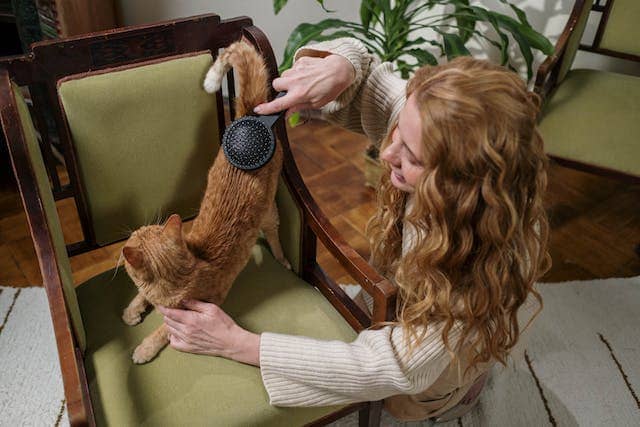
Pet grooming tools, such as brushes, nail clippers, and grooming gloves, are essentials for pet care.
Pros
- Wide Application: Necessary for almost all pet owners.
- Repeat Sales Potential: Tools need replacing or upgrading over time.
- Diverse Product Range: Cater to different breeds and sizes.
Cons
- Quality Variations: A wide range in the quality of products.
- Market Saturation: Many similar products available in the market.
Pricing and Potential Profit
- Wholesale Cost: Around $5-$15 per tool.
- Retail Price: Can be sold for $10-$30 per tool.
- Profit Margin: Approximately 50-60%.
Home and Kitchen Essentials
In dropshipping, home and kitchen essentials are shining as high-profit margin products, thanks to their everyday use and evolving innovations.
Smart kitchen gadgets, for instance, are changing the way you cook and manage your space. With technology integration, these items offer convenience and an enhanced cooking experience, making them highly sought after.
For those looking to add a personalized touch, high profit margin print on demand products cater to a niche market. From custom-engraved cutting boards to personalized aprons, these items allow for a higher price point due to their specialized nature.
They’re not just products; they’re bespoke mementos that fit perfectly into the rise of customized home essentials.
The potential for profit in this niche is robust, particularly with the ascendancy of home improvement trends. Your customers are seeking not just functionality but products that resonate with their lifestyle and aesthetic preferences.
Capitalize on this by selecting items that marry style, tech, and personalization.
Here is a quick glance at some profitable home and kitchen products to consider:
24. Stainless Steel Cookware Sets

High-quality stainless steel cookware sets are a staple in most kitchens, known for their durability and versatility.
Pros
- Durability: Resistant to rust and corrosion.
- Appeal: Attractive and fits well in any kitchen decor.
- Healthier Cooking: Often preferred for non-reactive cooking surfaces.
Cons
- Higher Price Point: Can be more expensive than other materials.
- Maintenance: Requires proper cleaning to maintain shine and prevent damage.
Pricing and Potential Profit
- Wholesale Cost: Around $30-$60 per set.
- Retail Price: Can be sold for $60-$120 per set.
- Profit Margin: Approximately 50-60%.
25. Smart Home Devices
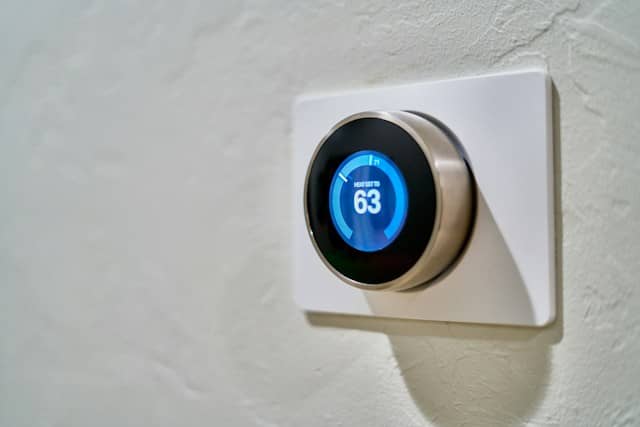
Devices like smart thermostats, lights, and assistants are popular for their convenience and energy-saving capabilities.
Pros
- Growing Market: Increasing demand in the smart home industry.
- Energy Efficiency: Attracts environmentally conscious consumers.
- Tech Appeal: Popular among tech-savvy individuals.
Cons
- Compatibility: May require specific ecosystems or setups.
- Price Sensitivity: Some devices can be quite expensive.
Pricing and Potential Profit
- Wholesale Cost: Around $20-$50 per device.
- Retail Price: Can be sold for $40-$100 per device.
- Profit Margin: Approximately 50-60%.
26. Eco-Friendly Storage Solutions

Sustainable storage options like bamboo containers or reusable food wraps are in demand for their environmental benefits.
Pros
- Sustainability: Appeals to eco-conscious consumers.
- Health and Safety: Often made without harmful chemicals.
- Aesthetic Appeal: Natural materials often have a unique, appealing look.
Cons
- Durability: Some materials may not be as durable as plastic.
- Market Niche: Mainly appeals to environmentally aware customers.
Pricing and Potential Profit
- Wholesale Cost: Around $5-$15 per item.
- Retail Price: Can be sold for $10-$30 per item.
- Profit Margin: Approximately 50-60%.
27. Decorative Lighting Fixtures
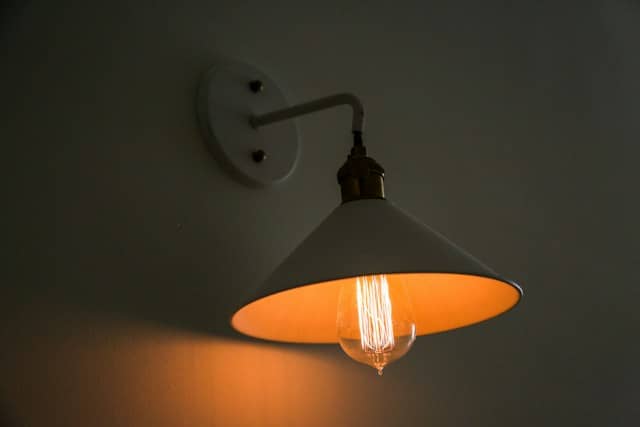
Unique and stylish lighting fixtures can transform a space and are popular for home makeovers.
Pros
- High Demand: Lighting is a key element in home decor.
- Variety: Wide range of styles to suit different tastes.
- Aesthetic Value: Can significantly enhance the decor of a room.
Cons
- Installation: Some fixtures may require professional installation.
- Fragility: Shipping and handling need to be carefully managed.
Pricing and Potential Profit
- Wholesale Cost: Around $15-$40 per fixture.
- Retail Price: Can be sold for $30-$80 per fixture.
- Profit Margin: Approximately 50-60%.
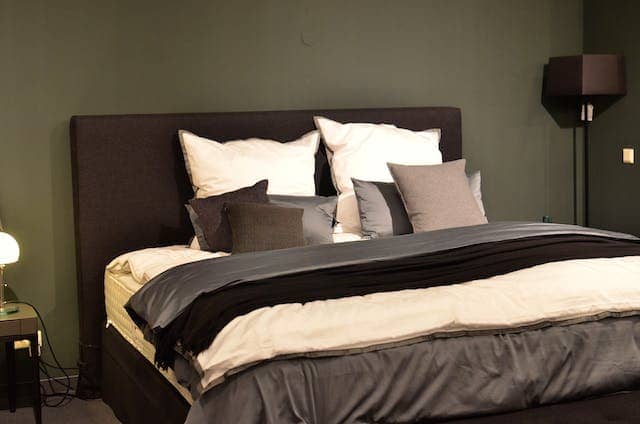
High-quality bedding sets, including sheets, pillowcases, and duvets, made from materials like Egyptian cotton or bamboo fiber.
Pros
- Comfort and Luxury: High thread count and quality materials offer superior comfort.
- Repeat Purchases: Bedding needs regular replacement or updating.
- Wide Audience: Appeals to a broad customer base looking for quality sleep.
Cons
- Price Point: Premium materials can be costly.
- Care Requirements: Some materials may require special care (e.g., dry cleaning).
Pricing and Potential Profit
- Wholesale Cost: Around $20-$50 per set.
- Retail Price: Can be sold for $40-$100 per set.
- Profit Margin: Approximately 50-60%.
Children’s Toys and Educational Products
When you consider children’s toys and educational products, not only do they promise fun, but they also offer value by enhancing learning experiences for children.
This specialized category has been expanding, with parents and educators alike recognizing the importance of learning through play.
By targeting such high-margin products, you’re positioning your business to tap into a market niche that’s both rewarding and responsible. Remember to prioritize safety and quality to build trust with your customers.
To embrace this profitable sector, you should focus on curating a selection that balances fun with educational merit.
Your inventory could include a mix of traditional playsets and tech-driven toys, each with the potential to captivate and educate today’s tech-savvy kids.
Keep an eye out for trends in this industry, as staying updated could mean catching the next big wave in the dropshipping toy market.
29. Educational STEM Toys

STEM (Science, Technology, Engineering, and Mathematics) toys include building sets, robotics kits, and science experiment kits, designed to enhance learning through play.
Pros
- Educational Value: Promotes learning and skill development.
- High Demand: Growing market with parents focusing on educational toys.
- Repeat Business: Constantly evolving educational stages offer ongoing sales opportunities.
Cons
- Complexity: Some toys may be too complex for certain age groups.
- Safety: Must adhere to strict safety standards due to their educational nature.
Pricing and Potential Profit
- Wholesale Cost: Around $15-$30 per item.
- Retail Price: Can be sold for $30-$60 per item.
- Profit Margin: Approximately 50-60%.
30. Personalized Storybooks

Personalized storybooks, where a child’s name and characteristics are incorporated into the story, make reading a more engaging experience.
Pros
- Unique Appeal: Personalization makes these books special gifts.
- Emotional Connection: Encourages children’s interest in reading.
- Repeat Customers: Ideal for gifts, leading to multiple purchases.
Cons
- Production Time: Personalization can lead to longer fulfillment times.
- Higher Price Point: Personalization adds to the cost.
Pricing and Potential Profit
- Wholesale Cost: Around $10-$20 per book.
- Retail Price: Can be sold for $20-$40 per book.
- Profit Margin: Approximately 50-60%.
31. Wooden Puzzles

Wooden puzzles for children are both durable and educational, helping with cognitive development and fine motor skills.
Pros
- Durability: Wooden puzzles are more durable than cardboard ones.
- Educational: Enhances problem-solving and motor skills.
- Eco-Friendly: Appeals to environmentally conscious parents.
Cons
- Choking Hazard: Small pieces can be a risk for younger children.
- Weight: Wooden toys can be heavier, potentially affecting shipping costs.
Pricing and Potential Profit
- Wholesale Cost: Around $5-$15 per puzzle.
- Retail Price: Can be sold for $10-$30 per puzzle.
- Profit Margin: Approximately 50-60%.
32. Interactive Learning Tablets

Interactive learning tablets loaded with educational apps and games offer a tech-based approach to learning.
Pros
- Tech Appeal: Attracts parents looking for modern educational tools.
- Versatility: Can include a variety of apps for different learning areas.
- Engagement: Interactive features keep children engaged in learning.
Cons
- Screen Time Concerns: Some parents may prefer non-screen-based learning.
- Battery Dependent: Requires regular charging.
Pricing and Potential Profit
- Wholesale Cost: Around $20-$40 per tablet.
- Retail Price: Can be sold for $40-$80 per tablet.
- Profit Margin: Approximately 50-60%.
33. Art and Craft Kits

Art and craft kits include materials and instructions for various creative projects, fostering creativity and artistic skills in children.
Pros
- Creativity Enhancement: Encourages artistic expression and creativity.
- Family Activity: Can be used for family bonding activities.
- Variety: Wide range of kits available for different age groups and interests.
Cons
- Messy: Some kits can be messy and require supervision.
- Consumable: Materials get used up and need to be replaced.
Pricing and Potential Profit
- Wholesale Cost: Around $5-$15 per kit.
- Retail Price: Can be sold for $10-$30 per kit.
- Profit Margin: Approximately 50-60%.
Outdoor and Sporting Goods
Outdoor activities have surged in popularity, creating a ripe market for dropshipping entrepreneurs looking to offer products with high margins.
Engaging in sports and outdoor recreation not only caters to those seeking adventure but also those who are conscious about health and fitness.
This niche is specialized and often has a loyal customer base willing to invest in quality gear.
You can capitalize on seasonal trends and the year-round appeal of fitness items. For example, portable water filters for hikers and cyclists are becoming increasingly popular due to growing awareness about health and environmental impacts.
Remember, success in this category hinges on understanding your audience and offering products that align with their passions and needs.
With the right approach, dropshipping in outdoor and sporting goods can be both financially rewarding and personally fulfilling.
34. High-Quality Hiking Backpacks

Durable and functional hiking backpacks designed for outdoor enthusiasts, featuring multiple compartments, ergonomic design, and weather-resistant materials.
Pros
- High Demand: Popular among hikers, campers, and travelers.
- Durability and Quality: High-quality materials can justify a higher price point.
- Versatility: Can be marketed for various outdoor activities.
Cons
- Size and Shipping: Larger items might incur higher shipping costs.
- Competitive Market: Many established brands in the market.
Pricing and Potential Profit
- Wholesale Cost: Around $20-$50 per backpack.
- Retail Price: Can be sold for $50-$100 per backpack.
- Profit Margin: Approximately 50-60%.
35. Performance Athletic Wear

Athletic wear that includes moisture-wicking, breathable fabrics, suitable for various sports and fitness activities.
Pros
- Broad Appeal: Appeals to a wide range of fitness enthusiasts.
- Repeat Purchases: Customers often buy multiple items for different activities.
- Trend-Focused: Aligns with health and wellness trends.
Cons
- Size and Fit Variability: Returns due to sizing issues.
- Market Saturation: High competition from both low-cost and premium brands.
Pricing and Potential Profit
- Wholesale Cost: Around $10-$20 per item.
- Retail Price: Can be sold for $20-$40 per item.
- Profit Margin: Approximately 50-60%.
36. Smart Fitness Trackers

Wearable devices that track physical activity, heart rate, sleep patterns, and offer various fitness-related features.
Pros
- Tech Appeal: Popular in the growing market of health tech enthusiasts.
- Functionality: Offers a range of features that appeal to tech-savvy fitness buffs.
- Brand Flexibility: Range from budget to premium models.
Cons
- Technological Advances: Rapid changes in technology can quickly make older models obsolete.
- Compatibility Issues: Need to be compatible with various smartphones and apps.
Pricing and Potential Profit
- Wholesale Cost: Around $20-$50 per tracker.
- Retail Price: Can be sold for $50-$100 per tracker.
- Profit Margin: Approximately 50-60%.
37. Portable Water Filters

Compact, portable water filters for hikers, campers, and travelers, ensuring access to clean drinking water in remote areas.
Pros
- Niche Market Appeal: Attracts outdoor enthusiasts and survivalists.
- Health and Safety: Provides a safe way to consume water outdoors.
- Lightweight and Compact: Easy to carry and ship.
Cons
- Product Awareness: Requires customer education on usage and benefits.
- Limited Use Cases: Primarily appeals to a specific outdoor activity segment.
Pricing and Potential Profit
- Wholesale Cost: Around $10-$25 per filter.
- Retail Price: Can be sold for $20-$50 per filter.
- Profit Margin: Approximately 50-60%.
Customizable and Personalized Products
In the ever-evolving realm of e-commerce, customizable and personalized products stand out as a lucrative niche with significant profit margins.
The appeal of tailor-made items is on the rise, as customers seek that personal touch to express their individuality.
- Print on Demand: These products, printed only once an order is placed, often flaunt healthy margins. Categories such as books, artwork, and apparel enjoy high demand.
- Custom Apparel: From T-shirts to hoodies, adding a personal message or design can command premium prices.
- Personalized Gifts: Items like engraved jewelry or custom-made figurines make for special purchases customers are willing to pay more for.
Smart entrepreneurs are tapping into the trend of specialty items. Whether you’re considering embarking on a dropshipping voyage or looking to expand your existing inventory, here’s what you need to know:
- High Demand: Personalized items are not just fads; they’re reflections of identity.
- Unique Appeal: Leveraging unique designs and customer-specific details leads to less price competition and, thus, higher margins.
- Customer Loyalty: Personalized products create a connection, increasing the likelihood of repeat purchases.
If you’re considering adding customizable options to your store, explore the vast array of products you can offer. Apparel, home decor, and tech accessories are prime territories for personalization.
By aligning with this consumer trend, you’re not just selling products; you’re providing a personal buying experience that often leads to customer satisfaction and retention.
38. Custom T-Shirts

T-shirts with personalized designs, logos, or slogans, popular for individual expression, events, or as corporate giveaways.
Pros
- High Demand: Ideal for personal use, events, and promotional items.
- Wide Audience: Appeals to all age groups and occasions.
- Variety of Design Options: Offers limitless creativity for designs.
Cons
- Production Time: Customization can lead to longer fulfillment times.
- Quality Control: Ensuring print quality on various fabric types.
Pricing and Potential Profit
- Wholesale Cost: Around $5-$10 per shirt.
- Retail Price: Can be sold for $15-$30 per shirt.
- Profit Margin: Approximately 50-70%.
39. Personalized Jewelry

Jewelry items such as necklaces, bracelets, or rings that are personalized with names, initials, or custom messages.
Pros
- Emotional Appeal: High sentimental value increases customer interest.
- Gift Market: Popular for occasions like anniversaries, birthdays, and weddings.
- High Perceived Value: Allows for a significant markup.
Cons
- Material Costs: Higher costs for quality materials.
- Return/Exchange Restrictions: Personalized items are often non-returnable.
Pricing and Potential Profit
- Wholesale Cost: Around $10-$30 per item.
- Retail Price: Can be sold for $20-$60 per item.
- Profit Margin: Approximately 50-60%.
40. Custom Wall Art

Wall art pieces, including canvases or posters, customized with personal photos, quotes, or artwork.
Pros
- Home Decor Appeal: Wide appeal for personalizing living spaces.
- High Customization: Each piece can be unique, enhancing value.
- Versatility: Suitable for various interior styles and themes.
Cons
- Shipping Concerns: Larger pieces require careful handling and packaging.
- Design Quality: Dependent on the quality of customer-provided images or artwork.
Pricing and Potential Profit
- Wholesale Cost: Around $15-$40 per piece.
- Retail Price: Can be sold for $30-$80 per piece.
- Profit Margin: Approximately 50-60%.
41. Personalized Mugs

Mugs customized with photos, quotes, or unique designs, popular for personal use and as gifts.
Pros
- Broad Market: Suitable for personal, corporate, or promotional use.
- High Utility Value: Everyday use increases appeal.
- Wide Range of Design Options: Can be personalized with various themes.
Cons
- Fragility: Requires careful packaging to prevent breakage.
- Print Durability: Ensuring the longevity of the print on the mug.
Pricing and Potential Profit
- Wholesale Cost: Around $3-$7 per mug.
- Retail Price: Can be sold for $10-$20 per mug.
- Profit Margin: Approximately 50-70%.
42. Custom Phone Cases
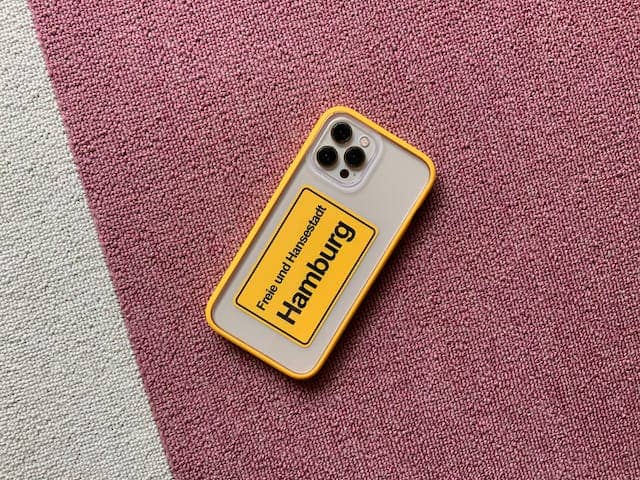
Phone cases personalized with images, patterns, or text, catering to the desire for unique and personal tech accessories.
Pros
- Mass Appeal: With the ubiquity of smartphones, the market is vast.
- Low Production Costs: Relatively inexpensive to produce.
- Frequent Updates: Constantly evolving phone models provide ongoing market opportunities.
Cons
- Model Specificity: Requires keeping up with the latest phone models.
- Print Quality: Maintaining high-quality prints and materials.
Pricing and Potential Profit
- Wholesale Cost: Around $5-$10 per case.
- Retail Price: Can be sold for $15-$30 per case.
- Profit Margin: Approximately 50-60%.
Eco-Friendly and Sustainable Products
As you explore dropshipping, it’s vital to consider eco-friendly and sustainable products for your online store. Eco-friendly products are not just a trend; they represent a growing movement in the market.
The demand for these items is driven by consumers who are increasingly conscious about the environment and the impact of their purchasing habits.
The products not only appeal to an eco-conscious market but they also offer a high profit margin due to their perceived value and the willingness of consumers to pay more for sustainability.
Furthermore, items made from sustainable materials like bamboo, hemp, or organic cotton are becoming increasingly popular.
By selecting the right suppliers, you can ensure that the products you offer are authentic, high-quality, and have a legitimate eco-friendly certification – all of which add to their value.
With the trend towards sustainability only set to grow, incorporating eco-friendly products into your dropshipping business is a smart move.
Not only are you aligning your business with a critical global mission, but you’re also tapping into a market with significant demand and potential for profit.
Keep in mind that marketing plays a big role in selling these products; transparent and honest communication about the sustainable benefits can help attract a loyal customer base.
43. Reusable Shopping Bags
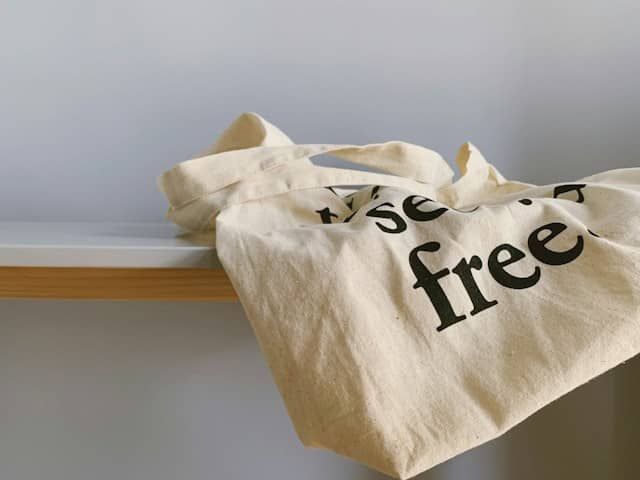
Durable, reusable shopping bags made from materials like canvas, jute, or recycled plastic, designed to reduce plastic waste.
Pros
- High Consumer Demand: Growing awareness about reducing plastic bag usage.
- Branding Potential: Can be customized with logos or designs for businesses.
- Wide Audience: Appeals to environmentally conscious shoppers.
Cons
- Market Saturation: Many similar products available.
- Material Costs: Higher-quality materials can be more expensive.
Pricing and Potential Profit
- Wholesale Cost: Around $1-$5 per bag.
- Retail Price: Can be sold for $5-$15 per bag.
- Profit Margin: Approximately 50-70%.
44. Sustainable Home Decor

Home decor items like recycled glass vases, bamboo frames, or upcycled furniture, designed with sustainability in mind.
Pros
- Unique Appeal: Each piece can be unique, especially with upcycled products.
- Trendy: Aligns with current home decor trends focusing on sustainability.
- High Perceived Value: Often viewed as more artisanal or premium.
Cons
- Production Variability: Upcycled or handmade items may vary in consistency.
- Niche Market: Mainly appeals to environmentally and aesthetically conscious customers.
Pricing and Potential Profit
- Wholesale Cost: Around $10-$30 per item.
- Retail Price: Can be sold for $20-$60 per item.
- Profit Margin: Approximately 50-60%.
45. Solar-Powered Gadgets

Gadgets like solar-powered chargers, lights, or garden accessories, utilizing solar energy for functionality.
Pros
- Energy Efficiency: Appeals to eco-conscious and tech-savvy consumers.
- Innovative Appeal: Solar power is seen as cutting-edge and practical.
- Variety of Products: Wide range of gadgets available.
Cons
- Dependence on Sunlight: Effectiveness varies based on solar exposure.
- Price Sensitivity: Can be more expensive than non-solar alternatives.
Pricing and Potential Profit
- Wholesale Cost: Around $10-$30 per gadget.
- Retail Price: Can be sold for $20-$60 per gadget.
- Profit Margin: Approximately 50-60%.
Tips for Maximizing Profit for Dropshipping
When you venture into dropshipping, you aim to make a substantial profit. Achieving this requires strategic planning and continuous optimization of your business processes. Below are actionable tips to help boost your margins in dropshipping.
1. Know Your Numbers.
Before you do anything, perform a detailed analysis of your costs. This includes the cost of goods sold, shipping fees, platform fees, and any other overheads.
Once you understand your expenses, set a competitive price point that ensures a healthy profit margin.
2. Select High Profit Margin Products.
Choose products that are affordable for you to acquire, yet have the potential for a high mark-up. Clothing items, for example, frequently fall into this category due to their high perceived value.
3. Optimize Your Marketing Spend.
Invest in marketing strategies with the best return on investment (ROI). Analyze which channels bring in the most revenue and adjust your budget accordingly to focus on the most profitable methods.
4. Leverage Impulse Buying.
Promote products that encourage impulse buys. Items with lower price points can entice customers to make spontaneous purchases if marketed effectively.
5. Streamline Inventory and Fulfillment.
Maintain an efficient inventory system to minimize holding costs. Streamlining your fulfillment process can also greatly reduce shipping times and costs, enhancing customer satisfaction and encouraging repeat purchases.
6. Focus on Scalability.
Lastly, build a business that can grow. Scalability is key, and dropshipping offers just that.
But to truly benefit, regularly evaluate every aspect of your business and make changes that allow you to scale without increasing your workload exponentially.

FAQs about Dropshipping Products with High Profit Margin
Before diving into the nitty-gritty of dropshipping profit margins, let’s answer some common questions you might have about which products to choose and how to maximize your profits.
What’s a Good Profit Margin for Drop Shipping?
A good profit margin for dropshipping can generally be considered anywhere from 15% to 45%. This margin allows for a substantial return on investment while still being competitive.
Remember that these percentages can vary greatly depending on the niche and the specific costs involved in your business.
What Makes a Good High-Margin Dropshipping Product?
A good high-margin dropshipping product typically has a unique selling proposition, limited market availability, and strong consumer demand.
Such products often solve specific problems or cater to a particular lifestyle or hobby.
For instance, selling foldable laptop stands caters to customers looking to improve ergonomics in their workspace, which can justify a higher price point due to the added value to the customer.
What Criteria Define a ‘Low Cost’ Product in a High-Profit Dropshipping Strategy?
‘Low cost’ in a high-profit dropshipping strategy refers to products that are inexpensive to manufacture, have low shipping costs, and require minimal storage fees.
These characteristics allow you to mark up the price for a higher profit while keeping the retail price attractive to customers.
Essential criteria include robust build quality, compact size, and lightweight properties to save on fulfillment costs. High-margin products like jewelry often meet these criteria, offering substantial value at minimal expense.
How to Find High-Margin Products to Dropship?
To find high-margin products to dropship, conduct thorough market research to understand trends and consumer interests.
Also, consider using tools that analyze product profitability and competition. Look for products with growing demand but limited competition which may allow for higher margins.
Engage with supplier databases and online marketplaces that provide insights into high-margin dropshipping products, ensuring that you’re up-to-date with the latest profitable opportunities.
Maximizing Your Dropshipping Success with High-Margin Products
In the competitive world of dropshipping, understanding what constitutes a good profit margin is crucial.
Typically, a 15-20% profit margin is considered healthy; however, aiming higher can significantly enhance your earnings.
To achieve this, focus on high profit margin products which can give you a more substantial return on each sale.
Identifying products with the potential for high margins involves analyzing consumer trends and sourcing items that offer unique value.
Think in terms of scalability – products that are easy to sell in larger quantities can lead to a more efficient business over time. This might include exclusive or innovative goods that address specific customer needs.
Your strategy should center around balancing supply costs with customer value perception. It’s about finding the sweet spot where the price reflects the products’ desirability without deterring potential buyers.
High-margin products can accommodate the occasional discounts or promotions, giving you leeway to attract customers without compromising profitability. For those new to the game or looking to expand their inventory, it’s worth considering a partnership to simplify the process.
Request a free sourcing quote from us at Niche and explore product sourcing options that can help you find the high-margin items to elevate your dropshipping business.


Interested to know more on what you can offer.